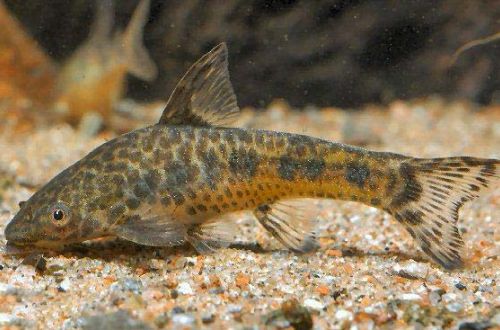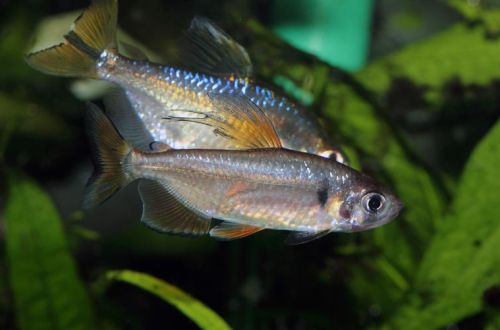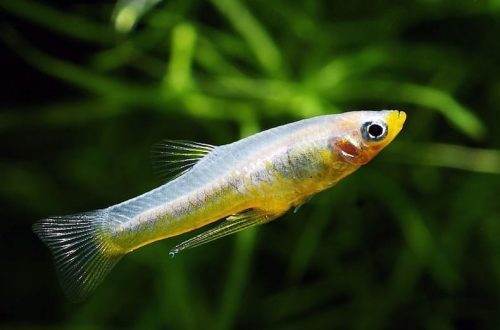
Otocinclus mottled
Otocinclus speckled, scientific name Otocinclus flexilis, belongs to the family Loricariidae (Mail catfish). Catfish native to South America inhabit the drainage basin of the shallow Lake Pato, located on the coast in the Brazilian state of Rio Grande do Sul.

Description
Adults reach a length of just under 7 cm. There are two color forms. The first is dark, whose pattern consists of many spots that have merged with each other. The second is light gray with brownish or yellow hues. There are also many specks in the pattern, but they are less intense. In addition, 6–7 large rounded spots appear on the sides of the body.
Behavior and Compatibility
It is considered a social friendly species towards large bottom fish and those that live in the water column or near the surface. In small aquariums, competition between representatives of a kind for dominance is possible. Also, rivalry is observed with the Corydoras, and not in favor of the latter. For this reason, the joint settlement of Kori catfish and Otocincluss should be avoided.
Brief information:
- The volume of the aquarium is from 40–50 liters.
- Temperature – 20-25°C
- Value pH — 6.5–7.8
- Water hardness – any (up to 25 dGH)
- Substrate type – any
- Lighting – subdued or moderate
- Brackish water – no
- Water movement is weak
- The size of the fish is 6–7 cm.
- Nutrition – feed with a predominance of herbal supplements
- Temperament – peaceful
Maintenance and care, arrangement of the aquarium
The optimal size of the aquarium for a group of 4-5 catfish starts from 50-60 liters. Unlike other representatives of the genus Otocinclus, the speckled does not need a large number of plants. However, the presence of tall species such as Vallisneria is welcome. Otherwise, the design is selected at the discretion of the aquarist or based on the needs of other fish.
For long-term keeping, it is important to provide clean water, with a suitable hydrochemical composition for the species. It is worth noting that the pH and dGH values are in a fairly wide range of acceptable values, which simplifies the aquarium maintenance procedure in terms of weekly water changes.
Although the fish is native to the tropics, it prefers relatively cool water, so it should be kept at an average temperature of no higher than 25°C.
Food
It is considered an omnivorous species. However, the basis of the diet is still plant-based feed. These can be naturally growing algae, for example, on the surface of natural snags, specialized dry flakes, usually made from spirulina, as well as pieces of cucumbers, zucchini, lettuce. It is recommended to serve conventional foods in the form of flakes and granules.
With a lack of herbal supplements in the diet, aquarium plants with delicate leaves may suffer.





